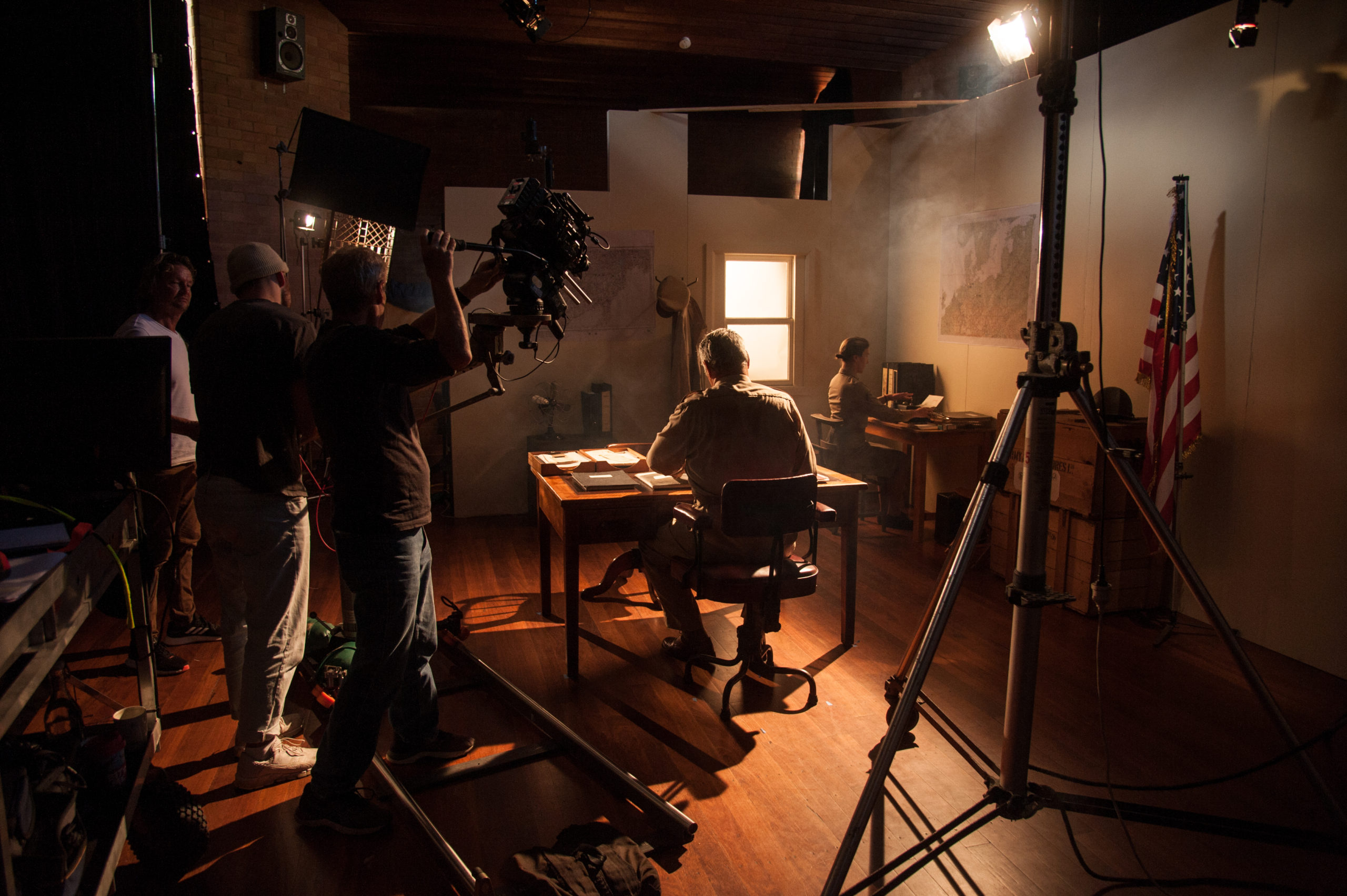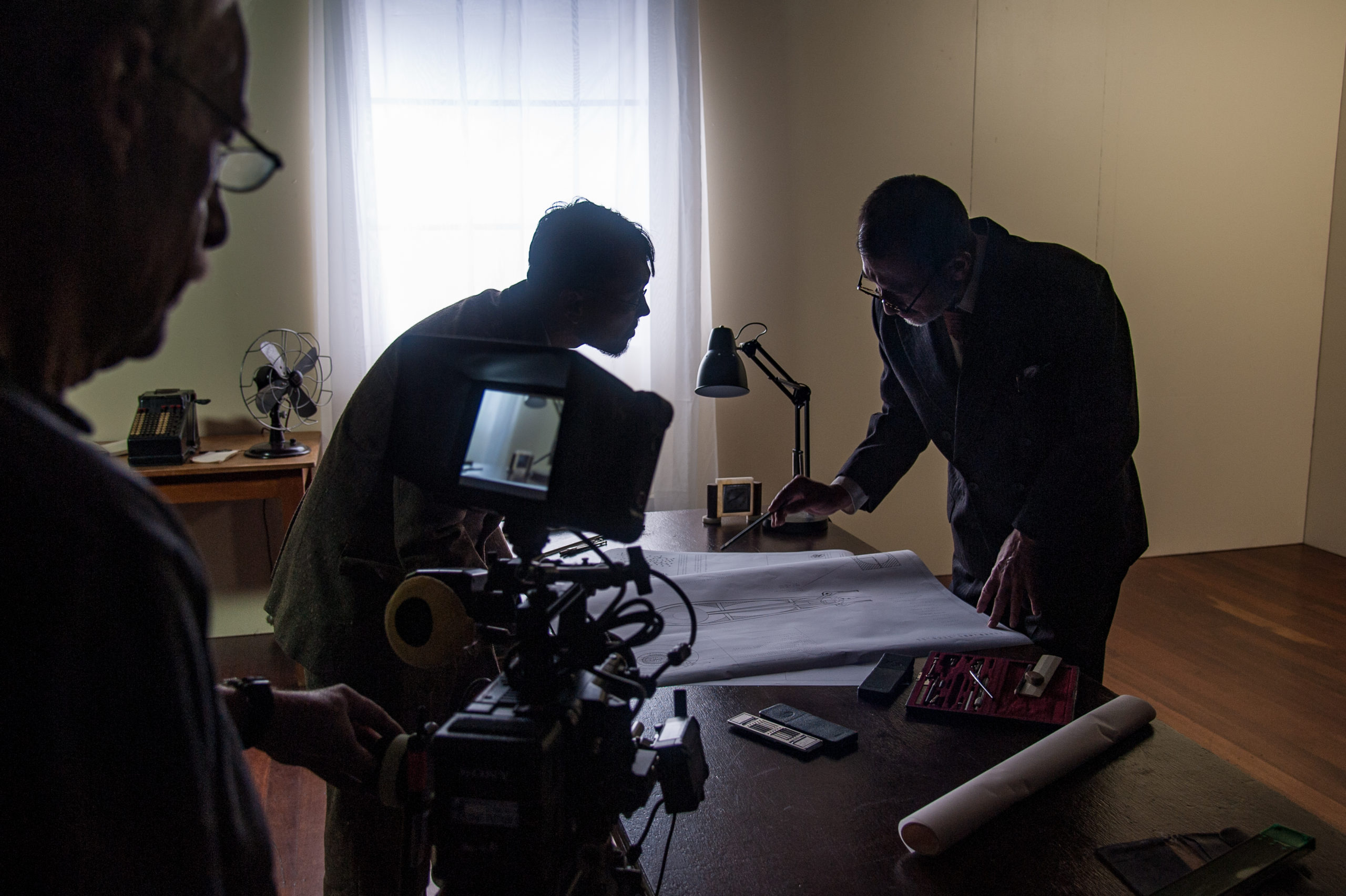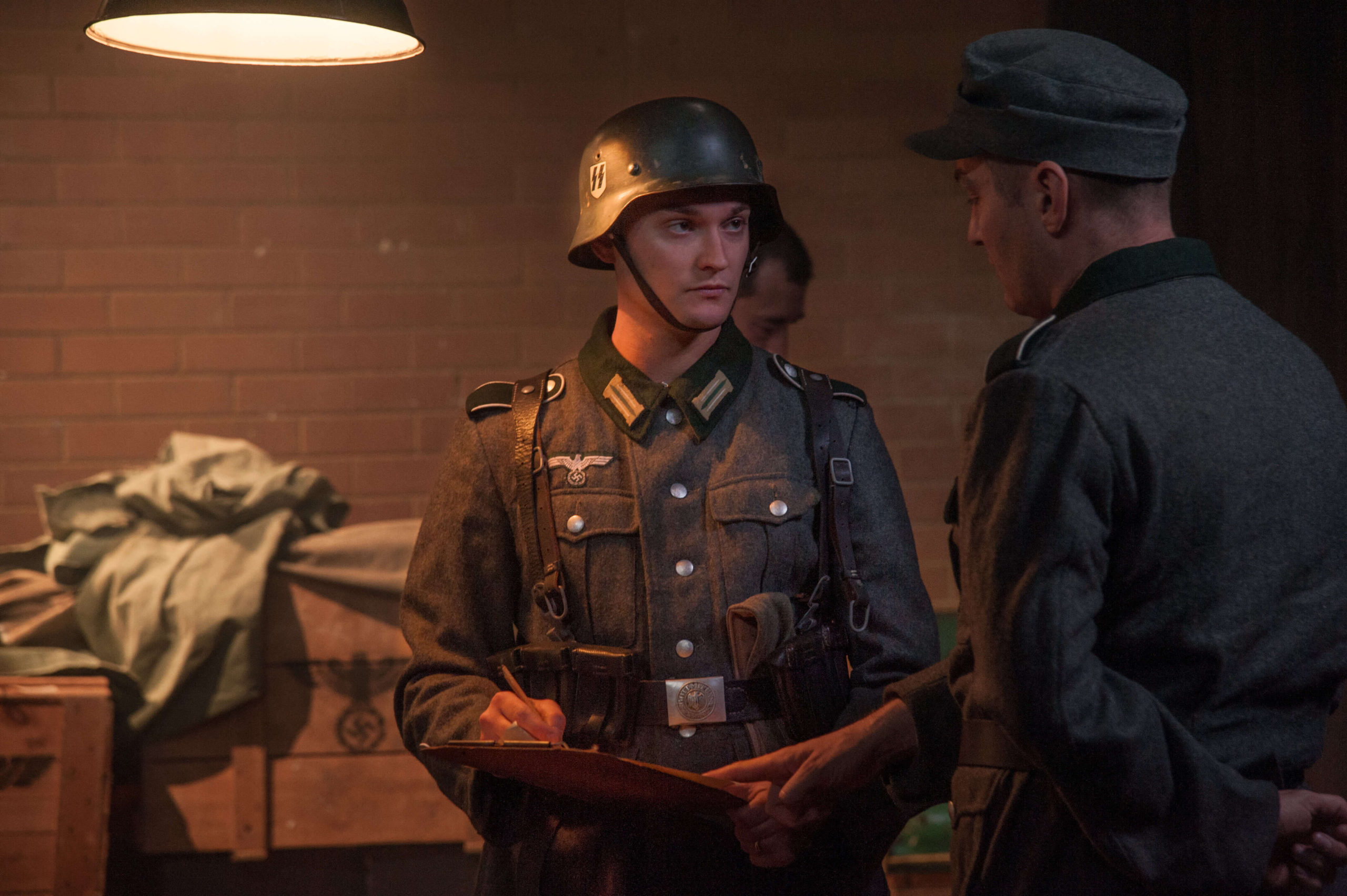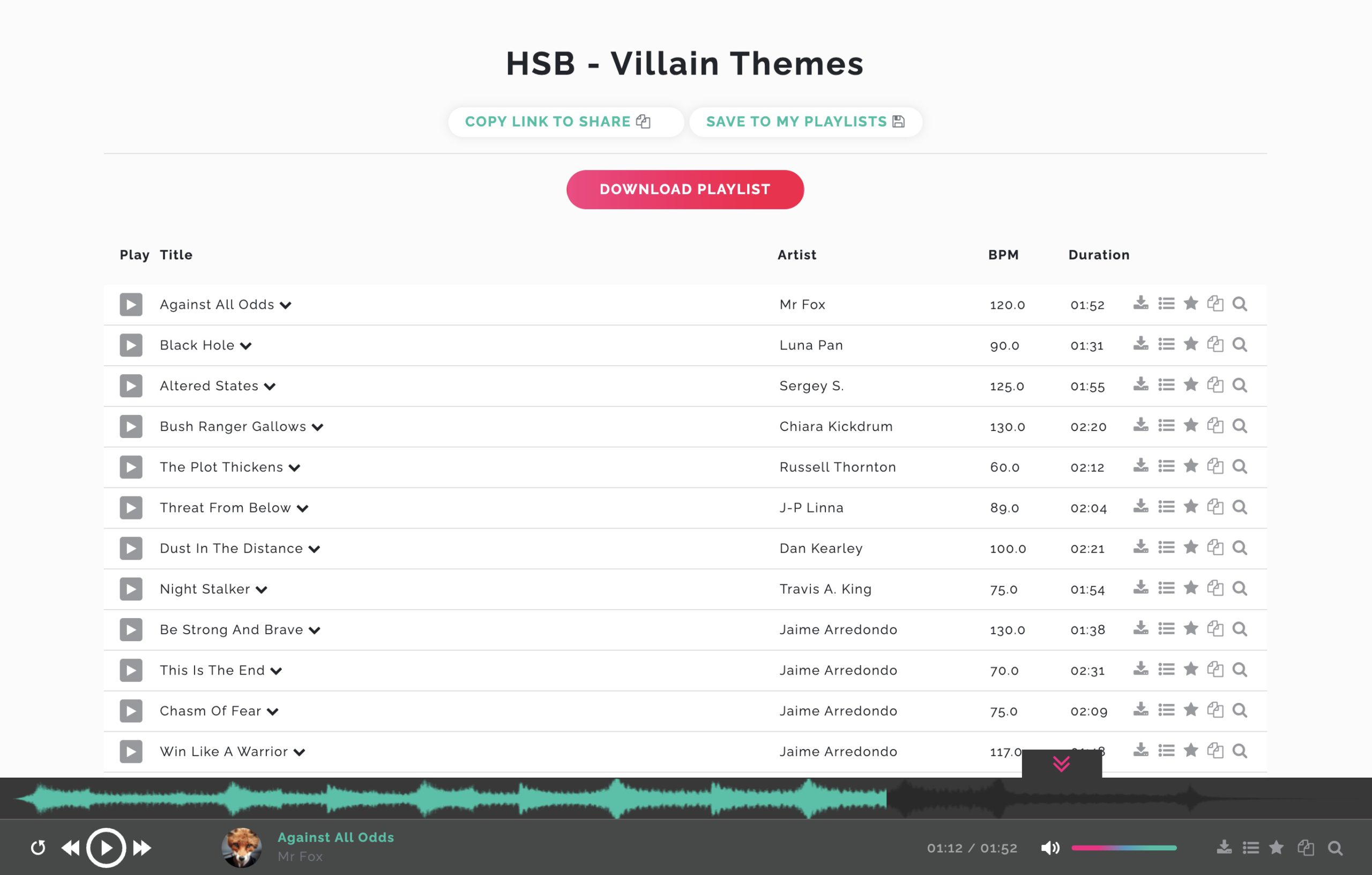08 Aug Behind The Scenes: Hitler’s Secret Bomb
From a burning question, a passion to find answers, and a team of world-class producers, comes a history-changing documentary for Discovery+, Hitler’s Secret Bomb.
We caught up with SeaLight Pictures, the creative powerhouse behind this documentary, as well as Getty Images—the secret source of much of this show’s rarely seen archival footage—to learn about their creative processes.
The Producer: Colette Beaudry (SeaLight Pictures)

Colette Beaudry is SeaLight Pictures’ Managing Director / Executive Producer, with 25+ years of documentary filmmaking experience. She has produced top-rating programs for Netflix, National Geographic, Disney+, Discovery, PBS, ABC Australia, SBS, ARTE France, SVT Sweden, NHNZ, the History Channel, Science Channel, Oxygen, CBS, TLC, and Animal Planet.
Thanks for your time today Colette, so tell me, what was the inspiration for covering this story?
Colette Beaudry: SeaLight Pictures makes films about science, history and natural history – and ‘nuclear’ has long been an area of fascination, right alongside the deep sea, marine science, and wildlife in general.
The birth of nuclear science coincided with WW2… in fact, it’s because of WW2 that nuclear science became a focus for Germany, the US, and Japan. The nation that could build the world’s first atomic bomb would win the deadliest war the world had ever known.
There are still so many dramatic, untold stories from WW2, and Hitler’s Secret Bomb is one we were passionate to tell—using a mix of recreations, interviews with top experts, and carefully curated, rarely seen stock footage from the US, Germany and Japan. It was the perfect ‘science meets history’ story for SeaLight to bring to life.
In factual storytelling, finding a ‘hook’ to draw in viewers often relies on uncovering a new piece of information, a new prism through which to shape a compelling mystery, or a new way to explore a burning question with the potential for — in this case, history-changing —answers.
After years of original research, SeaLight’s producers were able to uncover evidence that Nazi uranium – the critical ingredient for making an atomic bomb – did make it to Japan in the final months of WW2. What’s more, our documentary proved that both countries were closer to nuclear fission than previously thought.

Each of the three nations was pushing its scientists to unlock the science of nuclear power before the enemy did. Everything was done in strict secrecy, with no idea who would get there first. All this, while a war-weary world was waiting for the deepening hardships… to end. The stakes to develop the bomb could not have been higher.
Alongside secret developments in Nazi Germany and Imperial Japan, Hitler’s Secret Bomb interweaves the intrigue of 1940s America… its nuclear trials, near-total failures, and the ultimate creation of the A-bomb.
When global outcomes depend on new science – be it a race for the first Covid vaccine, the first man on the moon, or the first nuclear weapon — the politics, pressure, and story lend themselves to intense drama.
With a new story this rich, our inspiration to tell it was clear.
At what point do you start editing the footage together and when does music come into consideration?
Colette: Music is a critical consideration for every production, and really helps set the scene and enhance the drama. It’s a major tool and one we used quite intentionally to create tension, surprise, pace, dark moments, thoughtful moments, to get inside the mind of Axis power leaders, to address the solemness of nuclear bombs… Creatively, the role that music would play was known way before editing began.
With Melodie’s help, we also leaned on music/instruments that felt more American, Japanese or German in different parts, to subtly underscore where we’d travelled to in the story. We cut between the three countries frequently, so music also helped ground us.
This film is a mix of carefully selected archive, modern-day forensic mystery, and dramatic re-creations of key turning points for certain characters in our story. We had a tight edit schedule with no room for mistakes, as the broadcaster had an airdate already lined up. Melodie was right in there with us, narrowing down their library search for the right tracks. The Melodie library was user-friendly, and we did at times search more ourselves, but the bottom line was that Melodie could personally point us to exactly the types of tracks we needed faster than we could have searched from scratch – not something that many music library companies do. It was an excellent service that helped make a good-looking film also sound and feel great.
(And while noting services, Getty Images similarly provided a caring, knowing archivist to help offer up specific, customized footage that really enhanced our editorial intent. It’s these kinds of companies, like Getty and Melodie — whose specialist staff value-add and really care about the story – that help make documentary production great).


How did you approach searching the Melodie library for music on this project?
Colette: Melodie was a complete service provider in this regard and it was a wonderful creative partnership from the first day. We have produced many high-end films, with different libraries and composers, but for a library, we’ve rarely had such careful curation and selection of well-targeted musical offerings as we did from Day 1 with Melodie. Evan Buist and Craig Hodges have created a different model for offering tracks to clients. Yes, they can take on the commission of composing, but they also know their library – and how to search it – so well, that they supported our editor throughout. We gave Melodie the brief, and they nailed it. Their tracks (and the emotion they evoke) are among the strongest features of the whole 2-hour show.
Colette Beaudry – Managing Director / Executive Producer at SeaLight Pictures
Among other awards, Colette has also been nominated for 2 Primetime Emmys.
Visit SeaLight Pictures: www.sealightpictures.com
Follow SeaLight Pictures: Facebook | Instagram
Archival Footage – Douglas Simpson (Getty Images)
Can you please take us through your approach to sourcing what is very specific archive footage for this great production?
Douglas Simpson: The work undertaken to source content was very much done in collaboration with the SeaLight Pictures team. We worked hard to understand the story in order to be able to search for enough archive to supplement the narrative (in addition to the specific, known sequences that had been requested). From there it was very much a case of what content was going to really enhance this production and have a dramatic impact on screen.
What creative decisions did you make when compiling the visuals?
Douglas: We had to make creative decision to cull content that either didn’t quite fit the brief, or perhaps had already been used in prior, well-known productions. We had to shape the boards / lightboxes we put together, so we weren’t overwhelming the team at SeaLight with sheer volume of clips and stills but instead demonstrated a conscious effort of curation.
What sorts of footage failed to ‘make the cut’ in your selection? Why?
Douglas: In terms of footage that didn’t make the cut, we were very aware of the reputation that SeaLight bring in terms of amazing their audience. Whilst some content was a great fit for the story, we didn’t suggest unless it was bound to be visually arresting. This was a challenge when working with some of the older archives, however Getty Images has one of the largest and oldest privately held archives globally and we had a dedicated team who were able to source archive that had never been seen / digitised before.
What were some of the challenges in the creative process that you overcame?
Douglas: The biggest challenge was finding the specific archive to tell a story that had been scripted but had also been told (in other ways) before. The researchers had an idea of the story they were telling, and we had to not only find archive to tell that particular story to an audience, but we had to bring new life to archive content that could look dated to a modern audience. Our challenge was seeing past the ‘old archive’ and understanding the vision SeaLight had to communicate to the audience using this archive.
What was the highlight of working on this production for you?
Douglas: Highlights on this project was being able to work with SeaLight – an incredible production team used to visually breathtaking productions, having worked with David Attenborough before. That we were able to partner with them on this production to bring an old story to life, powered by Getty Images’ extensive and comprehensive archive, was a highlight in itself.

Douglas Simpson – Senior Field Sales Executive at Getty Images
Douglas Simpson has had a hand in multiple, diverse projects around the world. Especially documentaries. When Getty Images won the exclusive rights to license BBC Motion Gallery content, he became an expert in archive licensing. NBC, NHK, TVNZ, and many other prestigious archives are now represented.
Music Curation – Craig Hodges (Melodie)
What was your approach to music curation for the Hitler’s Secret Bomb brief?
Craig Hodges: We were given a solid, concise brief from the team at SeaLight about the driving purpose of the film, how they wanted the film to look, what kind of sections would be in the film, what role the music was going to play and where the film would sit within the milieu of content already out there. Essentially, when I do a search, I’ll start off with a genre or style in mind and sometimes even specific composers that I know will be relevant and then ask myself, Can I hear this in this type of production? Then I do a mental checklist to determine whether that track fits all the criteria that the client has given us in the brief. From there I’ll divide up all my selections into more easily accessible lists for relevant parts of the production. These are usually either divided up by genre, mood or purpose. Like, theme music vs. interview beds etc.

What types of music were selected for each of the key themes and sections making up this documentary?
Craig: The original brief was for Modern Orchestral with other specific sounds to support the vintage/historical footage being used throughout the production. We tried to keep this as a through line for all music selections. In the end the main types of tracks selected were:
- Dramatic and powerful Modern Orchestral pieces
- Modern Orchestral with slight military elements (specifically European)
- Music Reminiscent of historical newscasts
- Lighter Modern Orchestral for interviews
- Vintage, emotive, scene-appropriate music from each of the three nations of Germany, Japan and the U.S.
Run me through the creative decisions you have to make when determining what makes the cut?
Craig: Creatively, I’ll assess the production and timbre of a track as sometimes a track might tick all the boxes but it’s still not quite right. I’ll ask myself if the track fits within the purpose of the production, does the timbre and feel of the track contribute to the ethos of the production? This also works both ways, there may be a few tracks that don’t quite fit the criteria, but they may have tonal elements that will help to achieve the mission of the production.
Craig Hodges – Catalogue Manager at Melodie
Craig Hodges is a musical all-rounder with more than seven years working in record labels and music publishing. He brings a discerning ear to Melodie’s A&R team.
Ready to dive into the compelling history of the final days of World War II? Hitler’s Secret Bomb is streaming now on Discovery+. Watch the trailer here.


